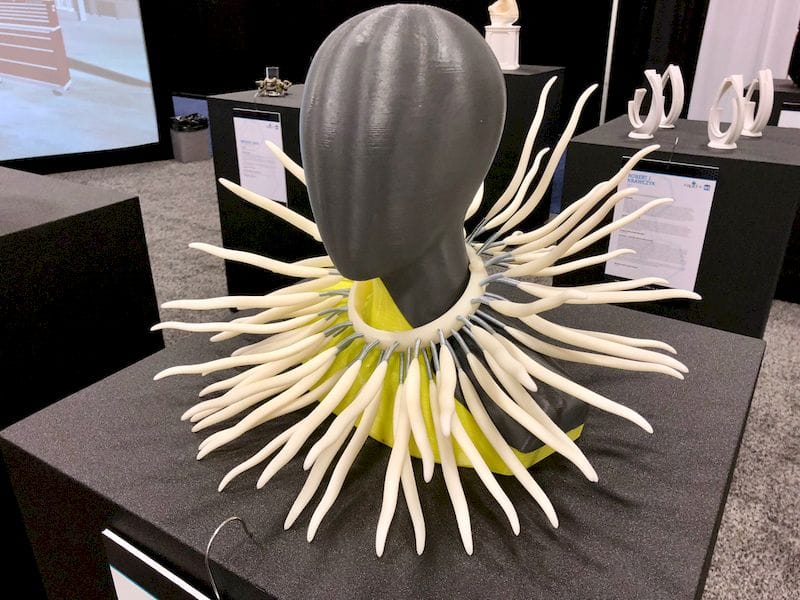
This week’s selection is the animated Bounce Necklace by wearable art desginer Donna Mason Sweigart.
Sweigart has made a dramatic transition from being trained in traditional jewelry production to a designer employing advanced 21st century tools to digitally design incredible wearable works, many of which are animated.
Her collection includes pieces made from a combination of 3D printed parts and often simple springs, and that’s the case with the Bounce Necklace.
In this piece near-identical “lobes” are connected the the base using springs. As you can imagine, this item produces a lot of movement when the wearer moves about, hence the name of the work.
Sweigart explains her philosophy:
What primarily drives my art is the tension of form in relation to the body. Exploration through space, movement, and texture reveals abstract concepts such as emotion, violence, and criticism. Wearable art creatively articulates these subjects.
By seeking the essence of fashion theory and historical aesthetics of wearable art, transcending the traditions of costume is made possible. My work comments on the transparency of fashion by describing both human intellect and primitive nature. We cannot remove the descriptive statement of what we wear as it reveals our values in an obvious as well as subconscious manner.
Human behavior is a fascinating area of study when comparing recent and ancient history. Markings or dress may reveal friend or foe (self/tribe or other), married or unmarried, and/or prescribed roles within a community. Research into this subject is delectable, full of traditions, discriminating rules, and sumptuary laws.
Regarding the Bounce Necklace, she explains:
This work relates to white ruff collars from northern Europeans traditions of the 16th century. This fashion of the standard collar is directly related to the industry and innovations in starch chemistry at the time.
Printed on a Stratasys machine in ABS plastic, like most of her works, this object looks relatively easy to create. Perhaps anyone with a 3D printer could do it?
No, I don’t think so. That’s because while the structure and design is straightforward, the IDEA of doing this is unique and could only come from an original artist with a radical concept inspired by history, context and capability.
That’s art. That’s 3D printing.

